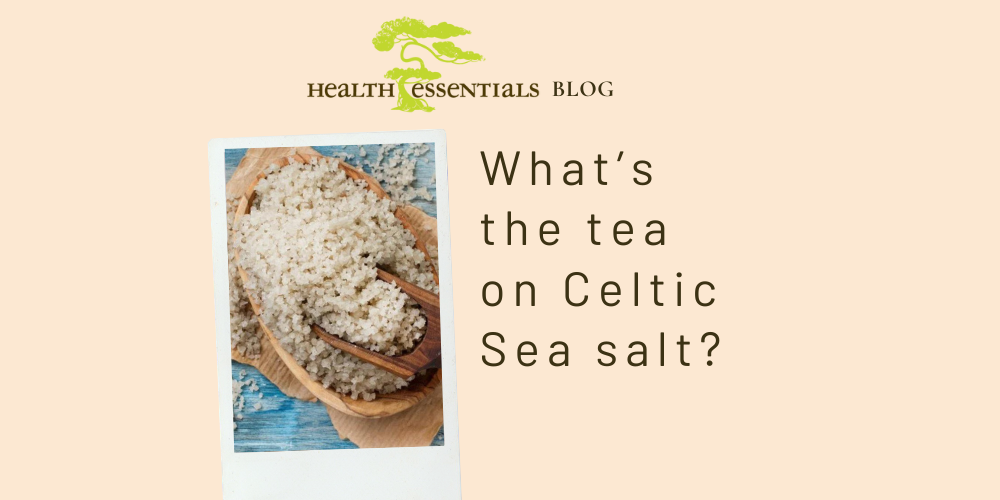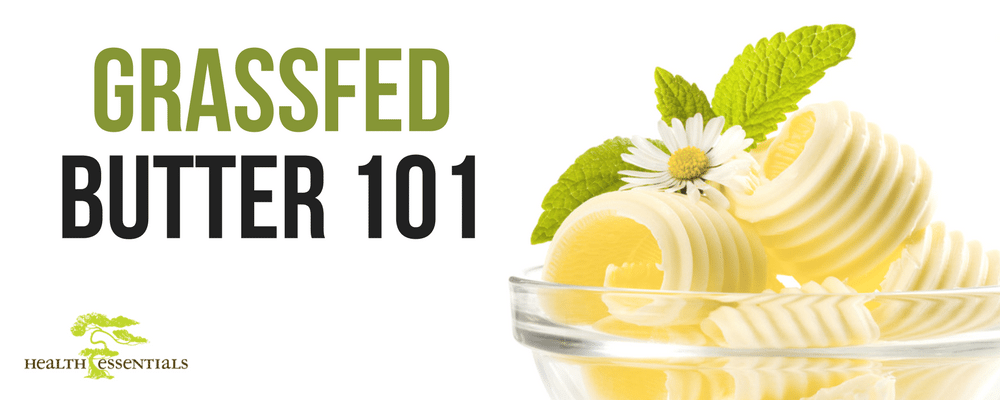
[divider]
(Grassfed) Butter 101
Butter – known traditionally as “Nature’s Multivitamin” – is definitely in high demand at Health Essentials. We definitely put that s*** on everything ;). But, like anything else amazing in this world… not all butter is created equal. In fact, there is definitely a plethora of butter on the market today that is best avoided altogether. Here, we’ll outline some of the major things to look for in a quality butter.
Why Grassfed?

Exactly how humans do better eating natural, whole-food derived diets made from seasonally available foods… animals that graze on pastures and eat the diet that they’re biologically designed to consume, have healthier, happier lives. AND just how humans do best in healthy, natural environments, so do animals! Grazing animals that live on pasture are allowed to eat the foods that their bodies NEED to thrive, and can soak in the environmental nutrients that keep them healthy as well – such as Vitamin D from the sun! The nutrient level of the foods that we consume from animals (such as meat and dairy) are of higher quality when the animal’s lives are enriched and healthy. Real, LIVE grass that grows out of the ground and isn’t treated with pesticides or chemicals provides animals with the nutrients that they need to thrive. Herbivorous animals (those who consume grass) have fermentation-based digestive systems that depend on grass, specifically, to fuel them and keep them healthy. Ensuring that animals get what they need to be healthy helps to ensure that the dairy and meat we consume from them are full of nutrients as well. Thus, the quality of the animal’s diet = the quality and quantity nutrients in the foods we derive from them.
Butter that is derived from grassfed cows is generally higher in nutrients such as butyrate, omega 3’s, CLA, beta-carotene, fat soluble vitamins – A, D, E & K, and antioxidants. It also tends to be LOWER in toxins. This is because toxins often accumulate in the fat tissues of animals, so the healthier the animal producing the milk, the less toxins to worry about!
[divider]
Grassfed versus Seasonally Pastured
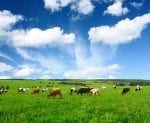
“Grassfed” is a term thrown around quite loosely in today’s food market. Its meaning is rather straight forward, however, there are multiple levels of it. Here’s why: As soon as an animal spends ANY length of time grazing on fresh grass, it technically qualifies them to be considered “grassfed”. Like… that could be a day in their whole life, which in our books just doesn’t quite cut it on the quality side of things. So, what’s important to look for is the specification of TIME that the animal spends grazing.
[divider]
(Real) Grassfed Butter
Provided that the farms who produce this butter are reputable and the sourcing is fabulous, this butter is generally the best of the best. The cows who produce this butter are eating a wholesome and natural diet and their milk production reflects this.
We carry two main Grassfed Butter Options:
Golden Ears Grassfed Butter:
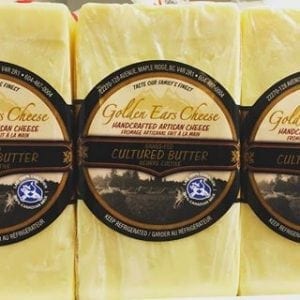
Golden Ears butter is sourced locally in Maple Ridge, B.C. from a family farm. This butter is cultured, meaning that it contains healthy bacteria that can improve the digestion of the butter. This can help the digestion process in people who are sensitive to dairy. With somewhat limited seasonal availability, we try to stock as much of this gold as possible so that everyone can enjoy it for most of the year! This butter has a very distinct yellow colour, and rich flavour due to the high beta-carotene content from the grassfed milk! #delicious
Kiwi Pure Butter:
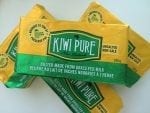
Kiwi Pure butter is sourced from New Zealand dairy where there is plenty of grass to go around all year! New Zealand is actually known to have the best butter in the world, and this butter definitely stands up to that title! Kiwi Pure is consistently golden yellow all year, denoting both high beta-carotene content and high fat content! #yum
[divider]
Seasonally Pastured Butter
Seasonally Pastured animals are grazing and consuming real grass for a minimum of 60% of their diet. This means that for up to 40% of the time they can be consuming some form of grains to supplement their diet. When shopping for seasonally pastured butter, it’s important to look for the “Organic” certification, and/or choose to buy that particular butter during “grazing” seasons.
We carry two great Canadian-sourced options for Seasonally Pastured butter:
Organic Meadows Butter

Organic meadows butter is sourced from Ontario, Canada. It is an Organic Seasonally Pastured butter. The cows that produce this butter are on pasture from April – November most years. It’s also a cultured butter, which is great for those who are a bit dairy sensitive. A few times of the year, we’re able to get in this butter with a special badge on it denoting that it’s sourced from 100% pastured cows!! We are sure to stock up on this butter at those times of the year to help ensure there’s enough to go around even into the off-season.
L’ancetre Butter
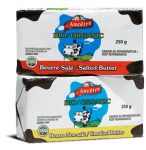
L’Ancetre butter is another seasonally pastured option. The cows that produce the milk used for this butter graze for 60% of their diet on pasture. The other 40% of their diet consists of Organic grains. This 60:40 ratio is guaranteed at any time of the year, and since its produced in Quebec with a typical grazing season of April – October, this butter can be a great choice throughout the spring and summer months.
P.S. If you’re lactose or dairy sensitive, and you’d like to learn about an alternative, check out this post about Grassfed Ghee, which is clarified butter! 🙂
For more information on the butter options that we carry, or for clarification of any of the information in this post, please feel free to contact us! 🙂 Our phone number is 250-590-5524, and our email is hello@myhealthessentials.ca
